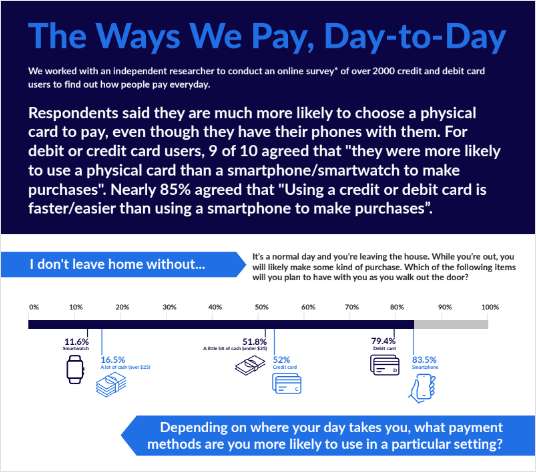Everywhere we turn today we hear that the refinance craze has ended and credit unions need to go after the purchase money market. I don't disagree, but talking about it isn't going to make it happen; it takes a strategic plan and plenty of hard work. Over the past couple of years, credit unions have been able to generate unprecedented volumes of mortgage loans by focusing on production. I've seen credit unions introduce real estate lending and then watch the members line up to take advantage of low interest rates. The bulk of management and staff time was spent on the manufacturing process. Move them in; move them out. Resources were devoted to originating and closing loans as quickly as possible. We didn't have to focus on getting loans to the door; they came knocking. We just had to figure out how to get them closed. We looked for any solution that would make the assembly line move more quickly and efficiently. In 2004 the landscape has changed, and we need to change with it. After seeing over 70% of the business comprised of refinance loans last year, the Mortgage Bankers Association predicts that in 2004 refinances will represent less than 30% of the business. This isn't about responding to higher rates-it's about building a strategy that positions the credit union to be its members' choice for home loans today, tomorrow and beyond. Here are some things you should consider. MARKETING The buzz in credit unions I visit is that marketing is going to be a key to bringing in business. But before they develop marketing strategies I encourage credit unions to take a long look in the mirror. Be objective about what you offer and what makes you competitive. How do you attract business when members aren't clamoring to refinance their loans? Marketing to realtors is often suggested as a way to get purchase money loans in the door. Realtors have significant influence over where their clients get the mortgage for their dream house. Getting the real estate community to see your credit union as reliable, competitive and efficient can be very helpful when trying to get your members' mortgages. But before you send your loan officers to knock on the realtors' doors, it's wise to make sure you understand the realtors' expectations and are prepared to meet and exceed them. Realtors have an endless selection of lenders who will gladly accept a referral for a borrower with the down payment in hand and the good credit to go with it. Frankly, our members have plenty of loan choices too. CONVENIENCE To see a lender as an attractive partner, the realtor and the member need access to qualified staff, and not just from 9 to 5, not just face to face, but online too. You need to meet your members on their terms. They need to know you have loan programs to suit a variety of borrowing needs and they must feel you are as committed as they are to making sure the deal closes. That might mean coming through with a bridge loan at the eleventh hour because a home didn't sell or accommodating the special scheduling needs of either the buyer or seller. Chances are the mortgage staff has been so busy with refinance loans, they aren't used to dealing with all the extra "stakeholders" in a purchase transaction. You may need training initiatives to make sure the service culture within the department recognizes that although the member may be the "client", the realtor counts, too. Credit unions have adopted this culture in indirect lending departments, where it is willingly acknowledged the dealer is a business partner. The real estate business isn't that different. CREDIBILITY And, it's not just about the realtor. Your membership and your potential membership need to see the credit union as a credible resource for homeownership solutions. Ask yourself if your community and SEG outreach programs position you as an expert. Do you present the credit union as an expert on homeownership issues or are real estate lending and finance not a focus of your corporate outreach? Credit unions are often viewed as resources for youth finance programs, great car loans and lease-like lending programs. We have earned this reputation by doing more than just delivering the product. We have been teachers, troubleshooters and partners, not just lenders. It's a good time to look at your staff, and the way your real estate team is organized. Over the last couple of years your loan officers were champions if they were organized, and detail orientated. Most often the emphasis was on taking a complete application, not relationship building or cross selling. The belief was that there wasn't time. Your folks aren't necessarily going to turn into aggressive, business development salespeople. Some may adapt over time, even relish having the time to develop business, but many of the champions have neither the skill or desire to create business opportunities. They take pride in their service levels and their attention to details. They will struggle with production goals, particularly when the phone isn't ringing on its own. Many of them may have come into real estate lending during the past few years and haven't known a market like this. So what options do you have? DELIVERY CHANNELS The credit unions showing the strongest increases in market share are using a variety of delivery channels to meet their members' needs. Use your delivery channel options effectively and make sure your staff has the skill and motivation to make the channel successful. More and more members are applying online. Even if the application is scored and approved electronically, the member still needs a consultative, service-orientated loan representative to see the transaction to a close. Someone needs to reach out to the realtors, bring them in the loop and coordinate the details to bring the loan to a successful close. You may find you have loan officers well positioned to help make an on-line channel successful, but they are not as successful at developing business out in the community. Matching staff competencies with the right delivery channel can make a big difference. The Freddie Mac January 2004 Economic Outlook states residential mortgage debt will continue to grow at an estimated 11% in 2004 for the following reasons: home values will be up about 6%, starts and sales, while less than 2003, are still better than in prior years, home equity lending will continue to be brisk, and real estate remains attractive as a consumption good and investment vehicle. This adds up to opportunity for credit unions. Don't wait for the business to come to you. Take stock of your strengths, and build on them. Make sure your real estate strategy includes being a credible, convenient source for home loans. Position yourself to be your members' number one choice for real estate loans and services, then go get them!
Continue Reading for Free
Register and gain access to:
- Breaking credit union news and analysis, on-site and via our newsletters and custom alerts
- Weekly Shared Accounts podcast featuring exclusive interviews with industry leaders
- Educational webcasts, white papers, and ebooks from industry thought leaders
- Critical coverage of the commercial real estate and financial advisory markets on our other ALM sites, GlobeSt.com and ThinkAdvisor.com
Already have an account? Sign In Now
© 2024 ALM Global, LLC, All Rights Reserved. Request academic re-use from www.copyright.com. All other uses, submit a request to [email protected]. For more information visit Asset & Logo Licensing.









